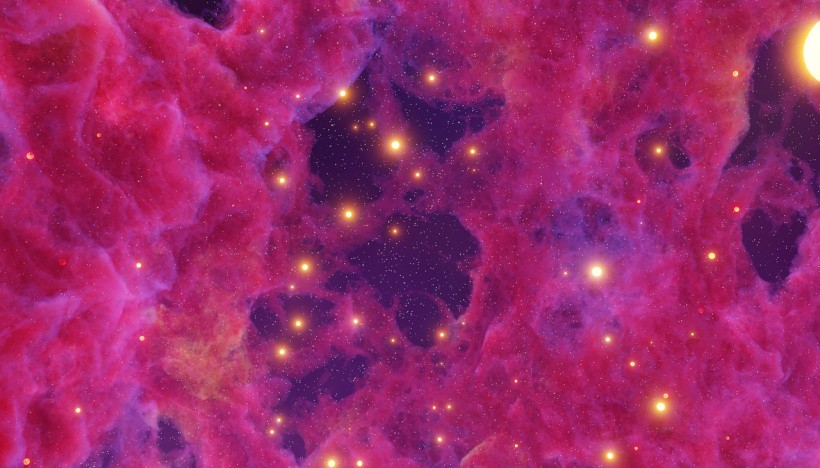Astronomers have observed gas clouds in the early Universe that provide insight into the remnants of the earliest stars. Although the stars themselves are no longer present, having burned and exploded beyond detection, the aftermath of their explosions reveals the products of atomic fusion that occurred within their cores.
This allows for the detection of the chemical traces of the explosions of the first stars in far-off gas clouds, says Andrea Saccardi, an astronomer at the Paris Observatory.

Remnants of the Earliest Stars in the Universe Found in Distant Gas Clouds That Contain Chemical Fingerprints of the First Supernova
First Stars of the Universe
According to Science Alert, current understanding of the universe suggests that there was a time when the universe was dark and void of light. About 13.8 billion years ago, the universe was much smaller and contained a hot, murky ionized gas that prevented light from traversing the universe, causing any photons to scatter off free electrons.
As the universe cooled down, protons and electrons combined to form neutral hydrogen and helium. The light could not move freely across the electromagnetic spectrum until the birth of the first stars and galaxies, which reionized the neutral hydrogen through their ultraviolet radiation.
Scientists believe that these initial stars, called Population III stars, emerged 13.7 to 13.5 billion years ago, but no one has yet to observe them directly. They are likely dissimilar from the stars we observe today, and could have been massive, with short life spans, ultimately leading to supernova explosions that dispersed their contents into space and laid the groundwork for future star formation.
Population III stars contained mostly hydrogen and helium, as that was all that existed in the universe at the time of their birth, with small traces of lithium. However, nuclear fusion within their cores caused the creation of heavier elements like carbon, oxygen, and magnesium, which then spread into space during their explosive death.
Presently, these stars are no longer observable, making direct study impossible, but remnants of their existence remain. While astronomers remain hopeful that Population III stars may be studied one day, the traces they left behind allow us to better understand the universe's evolution.
READ ALSO: Neutron Stars Create 'Perfect' Explosion in Space, Forming Senseless Symmetrical Sphere
Evidence of Population III Stars Left in Gas Clouds
According to Phys.org, researchers using ESO's Very Large Telescope (VLT) have identified for the first time the chemical fingerprints left behind by the explosion of the universe's initial stars. The researchers discovered three distant gas clouds whose chemical makeup matched that of the initial star explosions.
This revelation advances science's knowledge of the nature of the earliest stars that emerged following the Big Bang. Researchers believe that the first stars formed 13.5 billion years ago and were very different from the ones we see today, containing only hydrogen and helium.
The study, titled "Evidence of First Stars-enriched Gas in High-redshift Absorbers*" published in The Astrophysical Journal, reports that three very distant gas clouds from when the universe was just 10%-15% of its current age were observed to have a chemical fingerprint expected from the explosions of the first stars.
These initial supernovae emitted various chemical elements, such as carbon, oxygen, and magnesium, depending on the mass of these early stars and the energy of their explosions.
The researchers utilized light beacons known as quasars--very brilliant objects driven by supermassive black holes at the cores of distant galaxies--to discover and investigate these distant gas clouds. The light from a quasar travels across the cosmos, passing through gas clouds where different chemical components leave their trace.
The team analyzed data on several quasars observed with the X-shooter instrument on ESO's VLT, which splits light into an extremely wide range of wavelengths to identify many different chemical elements in these distant clouds.
RELATED ARTICLE: Universe's First Stars Were Supermassive With Weight of 100,000 Suns, Astronomers Reveal
Check out more news and information on Space in Science Times.














